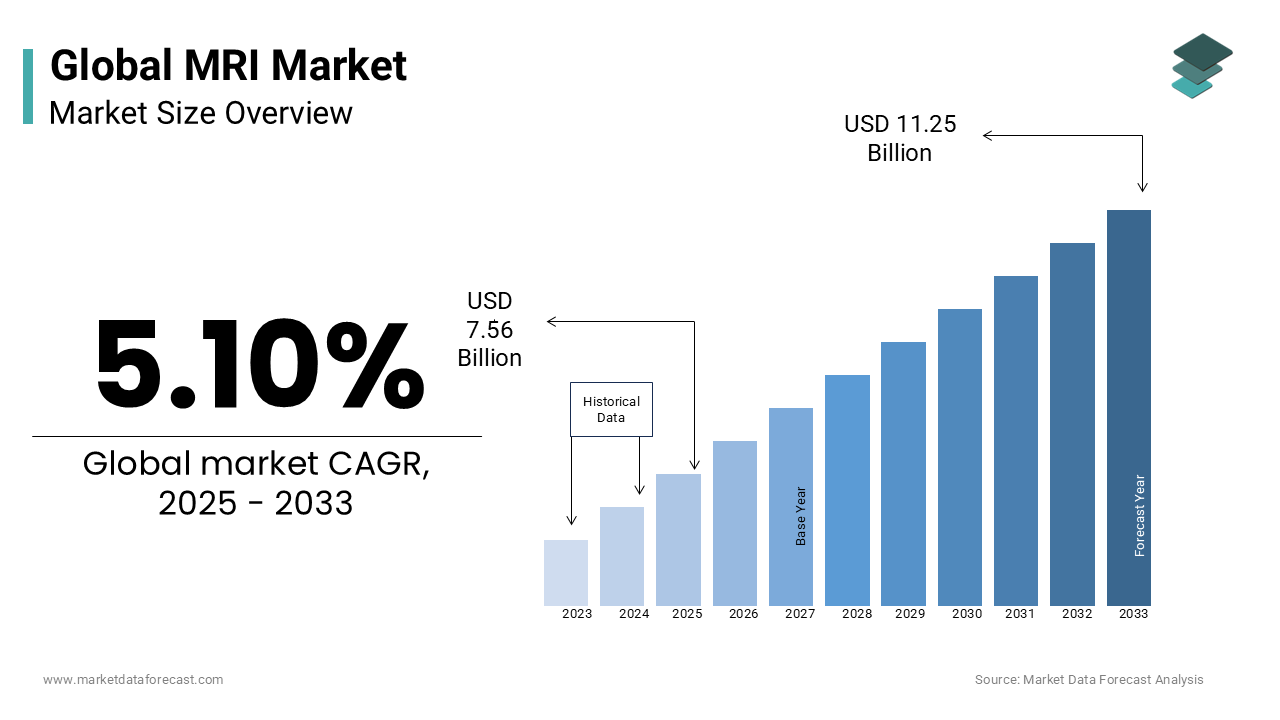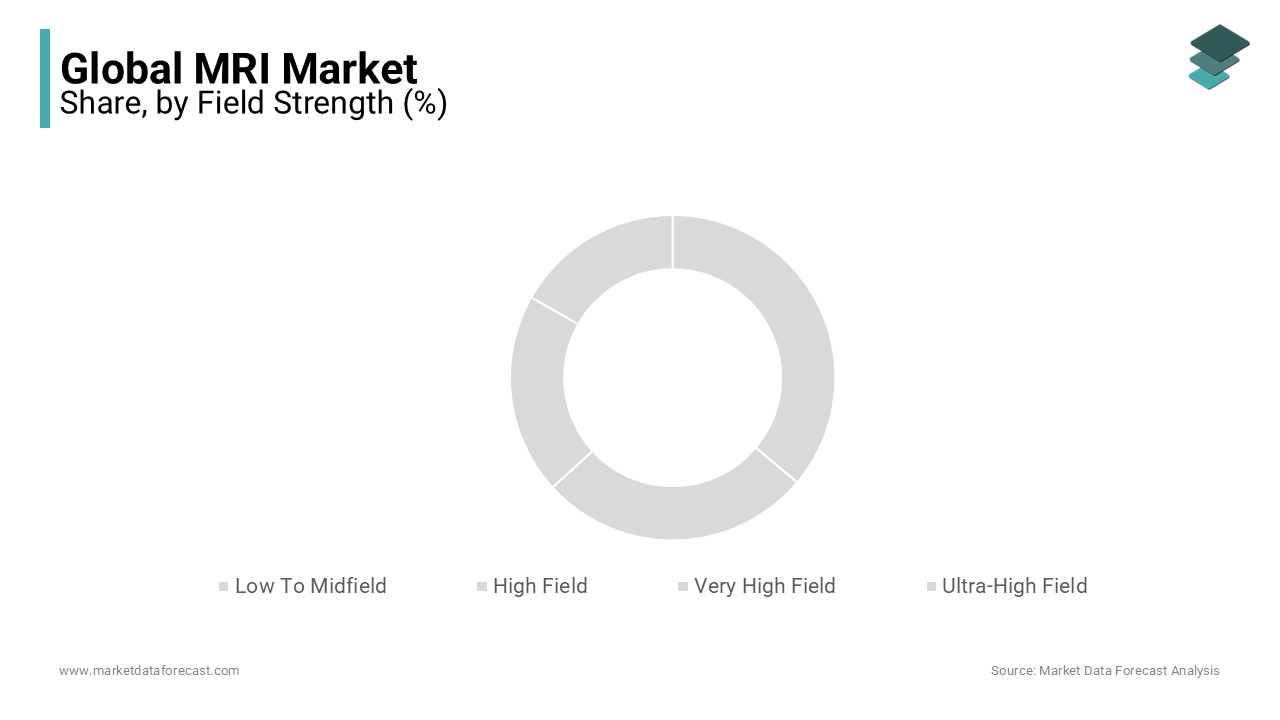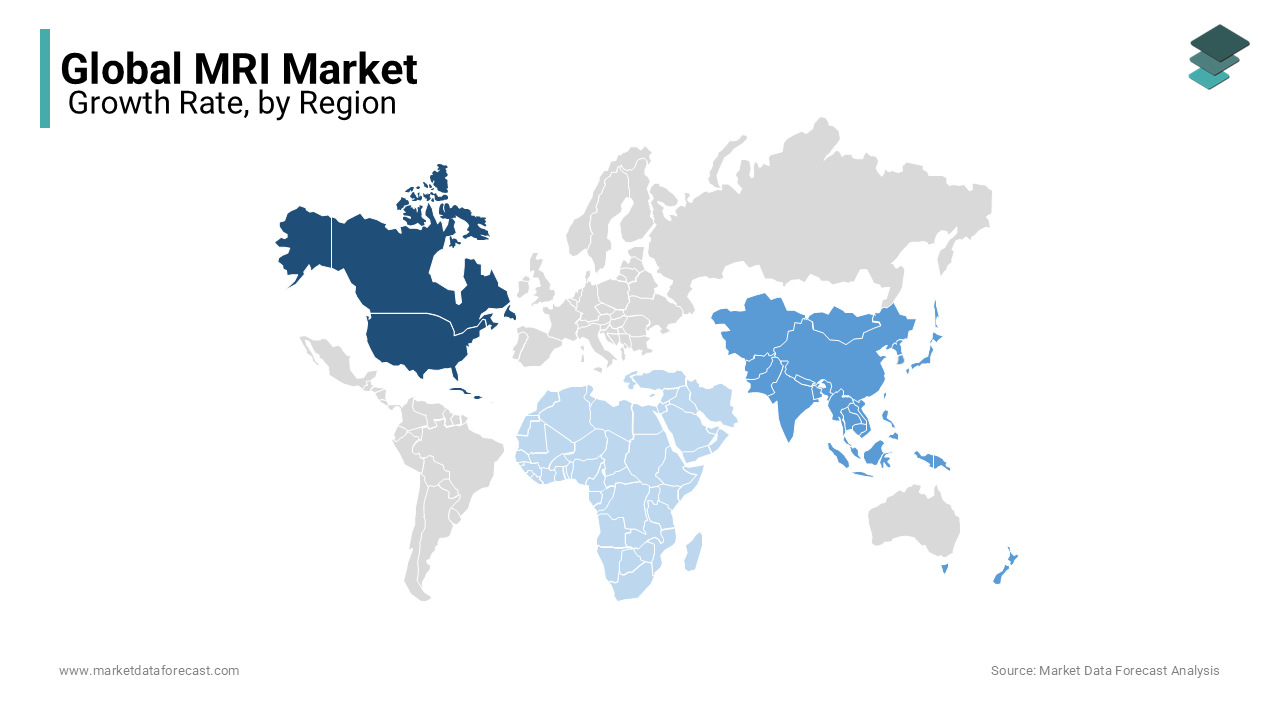Global MRI Market Size, Share, Trends & Growth Analysis Report – Segmented By Field Strength (Low To Midfield, High Field, Very High Field and Ultra-High Field), Architecture (Open MRI and Closed MRI), Application (Brain, Spine, Cardiac, Breast and Abdomen) & Region - Industry Analysis From 2025 to 2033
Global MRI Market Size
As per our research report, the global MRI market size was valued at USD 7.19 billion in 2024. The MRI market is estimated to be worth USD 11.25 billion by 2033 from USD 7.56 billion in 2025, growing at a CAGR of 5.10% during the forecast period.

Magnetic resonance imaging (MRI) is a useful diagnostic tool for detecting diseases such as lesions in the spine, cancers, and strokes that affect the blood vessels and brain. MRI technology is safe and feasible because, unlike other imaging technologies, it does not generate ionizing radiation. MRI devices can generate images in any plane and 3D isotropic images. One of the most significant achievements of modern healthcare research is imaging technology. Many imaging technologies are utilized in healthcare procedures, including CT, X-Ray, ultrasound imaging, and MRI. MRI is the most popular imaging method among these technologies due to its significant benefits over other imaging technologies regarding scan quality and capacity to capture soft tissues. Diffusion-weighted MRI is also commonly utilized to identify stroke within 30 minutes of its beginning. Increased employment is being created by expanding medical device businesses and improving diagnostic and therapeutic treatment options.
MARKET DRIVERS
Rising awareness of the benefits of early diagnosis, technical developments leading to replacing low-field MRI systems with high-field MRI systems, and the development of new helium resources propel the global MRI market growth. Academic institutes, research laboratories, hospitals, and physicians are all interested in advances in MRI techniques such as superconducting (SC) magnets, open architecture, high-field MRI, and software applications. Furthermore, introducing MRI-compatible pacemakers will considerably expand the number of eligible MRI treatments. The increasing demand for rapid and effective diagnostic treatments will likely drive MRI machine usage. Various paramagnetic contrast agents, such as gadolinium-DTPA, are injected intravenously to provide sharper, more precise, and accurate images in less time. During the forecast period, the MRI market is predicted to grow further due to the increasing development of intraoperative MRI and its use in different applications, such as neurosurgery. Technology advancements, such as quiet MRIs, are expected to propel the MRI market forward. Aged people usually suffer from various problems, such as cardiovascular and neurological disorders, which fuels the use of MRI and promotes market growth.
Diffusion and diffusion tensor imaging with tractography, neuroimaging comprising MR spectroscopy, perfusion imaging, and functional imaging utilizing the bold approach are likely to drive market growth throughout the forecast period. Because high-magnitude MRI systems are becoming more popular, different colleges are doing research or studies on them. This machine is intended to pave the way for new ways to diagnose diseases, including Alzheimer's, heart disease, diabetes, and cancer. Technological advancements in MRI systems, such as 7T, a high-resolution MRI, will improve the comfort of imaging the interior structure and functioning of the CNS while reducing processing time. Because of this, players in the MRI systems market will see considerable growth opportunities. Through new product releases, partnerships, and training experts for various MRI systems, healthcare businesses primarily focus on delivering enhanced healthcare facilities and goods to boost their economic opportunities.
MARKET RESTRAINTS
The market's growth is projected to be limited by the high cost of MRI systems, the incompatibility of MRI systems in some patients, and declining reimbursement rates for MRI therapies. In addition, the growth of the global MRI market is expected to be hampered by delayed product approval, a lack of skilled professionals, and frequent product recalls owing to the industry's strict regulatory structure.
REPORT COVERAGE
|
REPORT METRIC |
DETAILS |
|
Market Size Available |
2024 to 2033 |
|
Base Year |
2024 |
|
Forecast Period |
2025 to 2033 |
|
Segments Analysed |
By Field Strength, Architecture, Application & Region |
|
Various Analyses Covered |
Global, Regional & Country Level Analysis, Segment-Level Analysis; DROC; PESTLE Analysis; Porter’s Five Forces Analysis, Competitive Landscape, Analyst Overview of Investment Opportunities |
|
Regions Analysed |
North America, Europe, Asia Pacific, Latin America, the Middle East, and Africa |
|
Companies Analysed |
Hitachi Medical Corporation, Toshiba Medical Systems, Siemens Healthcare, GE Healthcare, Imris Inc., Fonar Corporation, Esaote S.P.A, Neusoft Medical System, Aurora Medical Imaging, and Philips Healthcare. |
SEGMENTAL ANALYSIS
By Field Strength Insights
Based on field strength, the low to midfield strength segment dominated the MRI market in 2024 and is anticipated to expand significantly over the forecast period. These field-strength MRI machines aid in capturing images with more accuracy and are accessible at a low cost.
The high field segment is predicted to grow fastest during the forecast period. Various investigations are being carried out to understand further the effectiveness of high-field strength MRI scanners in various therapeutic applications. Some companies have already begun building high-field MRI scanners and await regulatory permission. During the forecast period, improved coils to broaden the use of 7T MRI machines are projected to drive segment growth.

By Architecture Insights
Based on the architecture, the closed MRI systems segment held the largest share of the worldwide MRI market in 2024, and it is expected to grow at the fastest rate over the forecast period. This is because closed MRI systems are more powerful and provide better picture quality and throughput than open MRI systems.
By Application Insights
Based on the application, the brain segment dominated the market because the brain scans generated by MRI systems are of higher quality than those produced by computed tomography scans. As a result, it accounted for the most significant market share in 2023. Similarly, the breast imaging market is projected to develop substantially as the incidence of breast cancer continues to rise, creating a demand for detecting risk factors.
On the other hand, the spine segment is anticipated to showcase healthy growth during the forecast period. For spinal imaging, MRI is quickly becoming the dominant technique. The spin-echo method provides elevated pictures of the spinal cord and subarachnoid region. This method can be used in various emergency and trauma care settings.
REGIONAL ANALYSIS

Geographically, the MRI market in North America accounted for the largest share of the global in 2024, followed by Asia-Pacific. North America led the market in 2024, accounting for the largest revenue share. The rising prevalence of chronic diseases in this area, such as breast cancer, cardiovascular disease, and neurological disease, drives up demand for imaging analysis. Because of the United States' well-established healthcare system and the activities being carried out by numerous organizations, this area is anticipated to expand its market share in the future. In North America, Siemens and Philips are the major companies.
The MRI market in the Asia-Pacific is estimated to be the fastest-growing region owing to the growing improvements in the healthcare infrastructure and increasing healthcare spending. In addition, due to the growing aging population and increased demand for advanced imaging modalities, Asia Pacific is anticipated to grow at the highest CAGR over the forecast period. Furthermore, with a fast-developing healthcare service business and many qualified healthcare workers, countries like India, China, and Japan provide growth opportunities.
The Europe MRI market is predicted to hold a considerable share of the global market during the forecast period and had decent occupancy of the global market in 2024. The growing disposable income from the EU countries such as the UK, Germany, Italy, and France, increasing developments in the healthcare infrastructure, and growing demand for imaging technologies are propelling the MRI market in the European region.
The Latin American MRI market is expected to be promising in the coming years.
The MRI market in MEA captured a moderate share of the global market in 2024 and is expected to grow at a steady CAGR during the forecast period.
KEY MARKET PLAYERS
A few of the notable companies operating in the global MRI market are Hitachi Medical Corporation, Toshiba Medical Systems, Siemens Healthcare, GE Healthcare, Imris Inc., Fonar Corporation, Esaote S.P.A., Neusoft Medical System, Aurora Medical Imaging, and Philips Healthcare.
MARKET SEGMENTATION
This global MRI market research report has been segmented and sub-segmented based on the field strength, architecture, application, and region.
By Field Strength
- Low To Midfield
- High Field
- Very High Field
- Ultra-High Field
By Architecture
- Open MRI
- Closed MRI
By Application
- Brain
- Spine
- Cardiac
- Breast
- Abdomen
By Region
- North America
- Europe
- Asia-Pacific
- Latin America
- The Middle East and Africa
Frequently Asked Questions
How much was the global MRI market worth in 2024?
The global MRI market was valued at USD 7.19 billion in 2024.
What is the growth rate of the MRI market?
The global MRI market is anticipated to be growing at a CAGR of 5.1% from 2025 to 2033.
Which region dominated the MRI market in 2024?
North America had the dominating share among all the regions in the global market in 2024.
What are the companies playing a leading role in the MRI market?
Hitachi Medical Corporation, Toshiba Medical Systems, Siemens Healthcare, GE Healthcare, Imris Inc., Fonar Corporation, Esaote S.P.A., Neusoft Medical System, Aurora Medical Imaging, and Philips Healthcare are some of the noteworthy companies in the MRI market.
Related Reports
Access the study in MULTIPLE FORMATS
Purchase options starting from $ 2500
Didn’t find what you’re looking for?
TALK TO OUR ANALYST TEAM
Need something within your budget?
NO WORRIES! WE GOT YOU COVERED!
Call us on: +1 888 702 9696 (U.S Toll Free)
Write to us: sales@marketdataforecast.com
